Tales of Manhattan

Brief Synopsis
Cast & Crew
Julien Duvivier
Charles Boyer
Rita Hayworth
Ginger Rogers
Henry Fonda
Charles Laughton
Film Details
Technical Specs

Synopsis
Just before the opening of his new Broadway show, famed actor Paul Orman is fitted with a new formal tail coat by his tailor. The tailor nervously admits that the coat was cursed by a dismissed cutter, who swore that it would bring misfortune to anyone who wore it, but Orman does not care. After a well-received performance, Orman instructs his valet, Luther, to drive him to the country estate of Ethel Halloway. Ethel was once Orman's paramour, but after the end of their affair, she married John Halloway, a rich big-game hunter. Luther believes that Orman is better off without Ethel, but the actor cannot resist engineering an impromptu rendezvous with her. Orman and Ethel alternately declare their love and suspicions about each other's motives, until he admits that he should never have broken with her, then persuades her to go to Brazil with him. Just after Orman calls his manager and instructs him to close the play, Halloway enters and menancingly shows Orman his favorite rifle. Halloway shoots Orman, and after stating that he did so accidentally, convinces Ethel to promise to testify that it was an accident. Ethel also tells Orman that she will support his version, that the shooting was deliberate, and Orman finally realizes that she lies to everyone and has no intention of ever leaving her husband for him. After asserting that Halloway missed him and that he was only pretending to be shot in order to reveal Ethel's false nature, Orman collapses in his car and instructs Luther to take him to the hospital.
Soon after, Luther takes the tail coat, with its bullet hole intact, and gives it to his friend, Edgar, as security for a ten-dollar loan. Edgar is the butler for Harry Wilson, a Manhattan playboy who is to be married that evening to Diane. While Harry recovers from his wild bachelor party of the previous night, Diane receives a visit from her friend Ellen, who is determined to divorce her husband after finding evidence of his infidelity in his tail coat pocket. Diane advises her not to search her husband's clothes, then takes her to Harry's apartment. As they are waiting for Harry, Ellen urges Diane to look in his tail coat pocket, where she finds a torrid love letter from "Squirrel." Harry overhears the devastated Diane reading aloud the letter and calls his best friend, George, whom he implores to come immediately. Using the tail coat that Luther gave to Edgar, George tells Diane that he took Harry's coat when he left the night before, and that the coat she has searched is actually his. Diane is satisfied with the explanation and allows George to keep her company while Harry finishes dressing. The intimate letter makes Diane see timid George in a new light, however, and she falls in love with him as they flirt. George, who has always loved Diane, is thrilled by her response, but when Miss Gray, the "Squirrel" of the letter, arrives to castigate Harry for getting married, George still tries to cover up for him. Diane sees through the charade, and after returning Harry's ring, leaves with George.
Luther and Edgar then pawn the tail coat in order to get Edgar's money. Mrs. Smith sees the coat in the shop and tells the proprietor that she would love to buy it for her husband Charles, who is an accomplished musician and composer. At that moment, Charles, who is playing piano in a saloon, leaves his degrading job to watch the famed conductor Arturo Bellini at a rehearsal. Charles' friend, Wilson, convinces Bellini to see Charles, and despite his fright, Charles plays his "Bacchanale Moderne" for the conductor. Bellini is impressed with the piece and offers Charles the opportunity to conduct it at his next concert. On the night of the event, Wilson tells Charles that he must wear a formal tail coat. As Charles rushes to the theater, Mrs. Smith returns to the pawnshop and buys the coat, which is much too small for Charles. Nothing can be done, however, so Charles goes onstage and conducts his symphony. The coat tears twice as Charles moves vigorously and the audience begins to laugh. One of the musicians finally informs Charles, who removes his coat, but the laughter continues to swell. As Charles sobs onstage, Bellini stands in his box and slowly removes his own coat. Ashamed of their behavior, the other men in the audience remove their coats and applaud as Bellini gestures for Charles to resume. Charles' music is then a success, and after he leaves the hall with his wife and Wilson, he gives the coat to a worker for the Society to Aid the Friendless.
The tail coat is given to "Father" Joe, a dedicated helper of Bowery bums. Joe receives a letter for Avery L. Browne, a downtrodden fellow whom Joe knows as Larry. Joe takes the letter to Larry, and it is revealed to be an invitation to the twenty-fifth anniversary reunion of his law class. Larry, drunken and dirty as usual, refuses to attend, but Joe cleans him up, dresses him in the tail coat and sends him to the Waldorf-Astoria for the dinner. As Larry greets his old comrades, including his English teacher, Professor Lyons, he becomes more like his former, jovial self. He tells his friends that he was away on an important job in China and enjoys himself until the arrival of Williams, his ex-partner in their Chicago law firm. During the evening, Henderson, one of the attendees, believes that his wallet has been stolen, and when Larry, who is wearing a dickey and a cheap shirt, refuses to take his coat off and be searched, Williams accuses him of the crime. Williams stages a mock trial to prove that due to his low character, Larry must be guilty. Larry pleads his case, telling how he fought in World War I, married a lovely girl and entered partnership with Williams. During Prohibition, Larry had a successful practice protecting clients of doubtful occupations, but afterward, his practice fell apart and he was disbarred, probably through Williams' machinations. After losing his wife, Larry became a drifter and has wandered the streets of New York for the past six years. Finally removing his coat, Larry offers to be searched, then leaves when none of his friends speak. Henderson's chauffeur then enters and produces his wallet, which was left in the car. Completely dispirited, Larry gets drunk and returns to Joe's mission the following morning. Also arriving, however, are Larry's friends, Soupy Davis, Hank Bronson and Judge Barnes, who have come to offer him a job. Joe promises that he will send Larry right away, then tells his wife to sell the coat to the Santelli Brothers, a pair of second-hand clothes dealers.
The coat is stolen from the shop by Costello and Monk, hoodlums who want to rob a fancy gambling club. Properly attired, Costello is able to enter the club, then robs its patrons. He makes a getaway in a small plane, but when sparks from the cockpit set the coat on fire, Costello tosses it out before remembering that he hid the stolen $50,000 in it. The coat falls in fields worked by Luke and Esther, two black, Southern sharecroppers. Esther insists that they take the money to Reverend Lazurus, their preacher, who declares that it is manna from heaven. Wishing to help everyone in their poverty-stricken community, Lazurus declares that he will divide up the money to fulfill people's prayers. Esther, who has prayed for a cow, receives sixty dollars, while Luke is given almost eight hundred dollars for a new tractor. Children receive a few dollars each for shoes and toys, and everyone gets some money for presents, for it is Christmas Eve. Even after all the prayers have been accounted for, there is a large sum of money left, and Esther declares that it should be used to build a new church and to buy tools, land and seed so that none of them will go hungry again. Everyone is satisfied until they remember old Christopher, the poorest one of all. They rush to see him, and after explaining the situation, ask what he wants for Christmas. The old man declares that all he desires is something to keep away the pesky crows, and the once glorious tail coat becomes a scarecrow in Christopher's field.

Director

Julien Duvivier
Cast

Charles Boyer

Rita Hayworth

Ginger Rogers

Henry Fonda
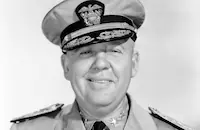
Charles Laughton

Edward G. Robinson

Paul Robeson

Ethel Waters

Eddie "rochester" Anderson

Thomas Mitchell
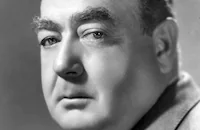
Eugene Pallette
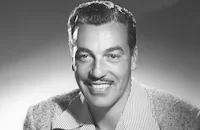
Cesar Romero

Gail Patrick

Roland Young

Marion Martin

Elsa Lanchester
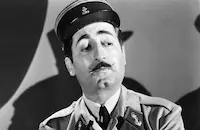
Victor Francen

George Sanders

James Gleason
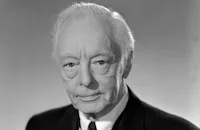
Harry Davenport

James Rennie

J. Carrol Naish
The Hall Johnson Choir
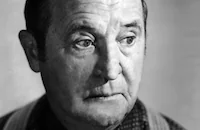
Frank Orth

Christian Rub

Sig Arno
Harry Hayden
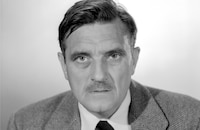
Morris Ankrum

Don Douglas

Mae Marsh
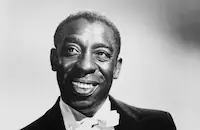
Clarence Muse
George Reed
Cordell Hickman
Paul Renay
Barbara Lynn
Adeline Dewalt Reynolds
Helene Reynolds
Robert Greig
Jack Chefe
William Halligan
Charles Williams
Eric Wilton
Connie Leon
Forbes Murray
Buster Brodie
Frank Jaquet

Will Wright
Frank Dae
Rene Austin
Frank Darien
Dewey Robinson
Tom O'grady
Alex Pollard
Joseph Bernard
Don Brodie
Ted Stanhope
John Kelly
Lonnie Nichols
Charles Gray
Phillip Hurlic
Alberta Gary
Charles Tannen
Esther Howard
Archie Savage
Rita Christiani
Laura Vaughn
Ella Mae Lashley
Olive Ball
Maggie Dorsey
Crew
Robert Bischoff
Henry Blankfort
Charles Bradshaw
Don Brodie
Lawrence Brown
Alan Campbell
Alan Campbell
Phil D'esco
Richard Day
Julien Duvivier
S. P. Eagle
W. D. Flick
Ladislas Fodor
Hugo Friedhofer
L. Gorog
Charles Hall
Ben Hecht
Roger Heman
Samuel Hoffenstein
Irene
Hall Johnson
Sol Kaplan
Sol Kaplan
William Koenig
Boris Leven
Thomas Little
Ferenc Molnar
Boris Morros
J. H. Nadel
Bernard Newman
Edward Paul
Guy Pearce
Ralph Rainger
Sam Rheiner
Leo Robin
Mal St. Clair
Donald Ogden Stewart
Robert Stillman
Dolly Tree
Lamar Trotti
L. Vadnai
Gwen Wakeling
Joseph Walker
Clarence Wheeler

Film Details
Technical Specs

Articles
Tales of Manhattan
Tales of Manhattan follows several characters who wear a tailcoat cursed by one of the tailors who made it. The first is Charles Boyer as an actor who is the lover of faithless wife Rita Hayworth. Next, the coat sparks a more successful romance between Henry Fonda and Ginger Rogers. In three more stories, the jacket brings surprising luck to composer Charles Laughton; failed lawyer Edward G. Robinson; and sharecropper Paul Robeson.
Sadly, Tales of Manhattan features the last film appearance of the brilliant African American star. Since the late 1920s, Robeson had been a mesmerizing presence onstage and in films, especially in Europe. But at home, recognition and good roles were few and far between, and he became an active participant in the struggle for African-American equality. According to a New York Times article, Robeson announced he was "through with Hollywood until movie magnates found some other way to portray the Negro besides the usual 'plantation hallelujah shouters.'" In his lifetime, unfortunately, that didn't happen.
Bosley Crowther's New York Times review of Tales of Manhattan begins by noting that "the wires have been buzzing excitedly out of Hollywood for several months about a bold and amazing new picture which would break away from standard movie forms." It goes on to describe what apparently had not been seen in a Hollywood movie to date, an omnibus film featuring several unrelated stories written by different people, and starring different actors. According to Crowther, the experiment was a brilliant success: "[It] is one of those rare films--a tricky departure from the norm, which, in spite of its five-ring-circus nature, achieves an impressive effect. Neither profound nor very searching, it nevertheless manages to convey a gentle, detached comprehension of the irony and pity of life, and it constantly grapples one's interest with its run of assorted incidents."
The Variety critic was less enthusiastic: "The expanse of acting and writing talent may have been too much for Julien Duvivier, a fine foreign director, for he comes up with very few original touches in this picture. Some of the sequences he appears to have permitted to go along on their momentum."
According to the Hollywood Reporter, Tales of Manhattan was the first film shown in Paris theaters after the city was liberated by the Allies in October of 1944. After the war, Duvivier returned to France and in the 1950s became one of the well-established directors reviled by the French New Wave filmmakers as proponents of "the cinema of quality," which they rejected as being out of touch with contemporary society.
Director: Julien Duvivier
Producer: Boris Morros, Sam Spiegel (as S.P. Eagle)
Screenplay: Ben Hecht, Alan Campbell, Ferenc Molnar, Samuel Hoffenstein, Donald Ogden Stewart, Lamar Trotti, Laszlo Gorog, Laszlo Vadnai
Cinematography: Joseph Walker
Editor: Robert William Bischoff, Gene Fowler, Jr.
Costume Design: Dolly Tree, Bernard Newman, Gwen Wakeling, Irene
Art Direction: Richard Day, Boris Leven
Music: Sol Kaplan
Principal Cast: Charles Boyer, Rita Hayworth, Ginger Rogers, Henry Fonda, Charles Laughton, Edward G. Robinson, Paul Robeson, Ethel Waters, Eddie "Rochester" Anderson, Thomas Mitchell, Eugene Pallette, Cesar Romero
127 minutes
by Margarita Landazuri

Tales of Manhattan
Quotes
I know my own tailcoat!- George
Well, you didn't last night!- Diane
Trivia
W.C. Fields appeared in a section of the film that was cut from film that was cut from the final version. It has been restored to the video version. Also in the segment are Margaret Dumont and Phil Silvers.
Amused by Charles Boyer's thick French accent, Rita Hayworth giggled her way through the filming of their love scenes together.
Notes
The working title of this film was Tails of Manhattan. According to a June 4, 1941 Hollywood Reporter news item, producer Boris Morros originally was to make the picture at Paramount, with Dalton Trumbo and Aben Kandel preparing a screenplay based on an original story written by Billy Wilder and Walter Reisch. Morros planned to use seven different directors on the seven planned episodes. No other contemporary source mentions Wilder and Reisch's involvement, and it is unlikely that they, or Trumbo and Kandel, contributed to the completed picture. A October 26, 1941 New York Herald Tribune article reported that Morros had been "planning his picture ever since a year ago when a friend of his named Eagle brought the idea to him." Several other contemporary sources credit co-producer S. P. Eagle (pseudonym of Sam Spiegel) with the original story idea, although the Twentieth Century-Fox Records of the Legal Department, located at the UCLA Arts-Special Collections Library, contains a memo from Spiegel in which he states that the idea of tying the individual sequences together "by means of a tail coat was based on an original idea" found in a 1931 book of German stories by Max Nosseck. Spiegel did not use any of Nosseck's stories, however, just his basic premise, to which Nosseck sold the rights to well-known literary agent George Marton, who in turn assigned the rights to Spiegel.
Further information in the legal records indicates that the first sequence was based on Marsall, a one-act play by Ferenc Molnar, which was performed as The Field Marshall in Budapest on October 19, 1929; the second sequence was based on a play entitled Sextette by Ladislas Fodor, the production dates of which have not been determined; and the rest of the sequences were based on original story ideas. Contemporary sources note that director Julien Duvivier also had a hand in shaping the screenplay. Besides Duvivier, Marton, Morros and Spiegel, none of whom received onscreen writing credit, the studio's legal records indicate that writer Nicholas Jory and dialogue director Don Brodie May have contributed to the script. A February 5, 1942 Hollywood Reporter news item noted that the production would feature writing credits for twelve of the twenty writers who worked on the screenplay. The news item also commented: "The tangle of original story credits has not yet been worked out. A total of 40 original stories and ideas were purchased for its variegated sequences."
The legal files and contemporary news items note that Irene Dunne and Joel McCrea were originally set for the leads of the second sequence, although a November 23, 1941 New York Times item stated that Dunne would play Thomas Mitchell's wife in the first sequence. Walter Huston was considered for a role before Morros and Spiegel signed a distribution deal with Twentieth Century-Fox in September 1941, and Frances Dee was considered for one of two sequences. According to a Hollywood Reporter news item, Buster Keaton was signed to play "Hiawatha" in the film, although he is not in the finished picture. Other Hollywood Reporter news items state that the singing group Deep River Boys and Gene Austin were cast, but their participation in the completed picture has not been confirmed. Rita Hayworth was borrowed from Columbia for the production. Although the legal files contain a December 3, 1941 memo from Spiegel requesting a $2,500 salary payment to Jean Levy-Strauss, the exact nature of Levy-Strauss' contribution to the completed picture has not been determined.
The legal records, in addition to the Twentieth Century-Fox Produced Scripts Collection and other contemporary sources, note that an entire sequence featuring W. C. Fields, Phil Silvers and Margaret Dumont was filmed and deleted from the finished picture. The sequence was written primarily by Bert Lawrence, Anne Wigton, William Morrow and Edmund Beloin, although a Hollywood Reporter news item stated that Eddie Welch was to collaborate with Morrow and Beloin. Hollywood Reporter also noted that director Mal St. Clair worked with Duvivier on this sequence, "advising on gags and comedy routines for Fields and other comics." Modern sources, however, report that St. Clair directed the majority of the Fields sequence. In the sequence, which was to be placed between the ones starring Edward G. Robinson and Paul Robeson, Fields played a confidence man who speaks before a temperance society headed by Dumont and accidentally gets his audience drunk. A May 3, 1942 New York Times article reported that the sequence was deleted because "the producers, having shown it at sneak previews, feel that it is not in keeping with the other five sections." On May 8, 1942, an ad placed by Fields appeared in Hollywood Reporter, in which he quoted from positive reviews of his sequence and rebutted a radio report that he was going to sue the studio for deleting his sequence. Fields asserted that he had no intention of suing Twentieth Century-Fox or the producers. The legal records indicate that the studio considered using Fields' sequence in its 1944 compilation film Take It or Leave It (see below). In May 1996, the Fields sequence was included in the video version of Tales of Manhattan released by the studio.
According to a studio press release, Morros commissioned the "Bacchanale Moderne" by Sol Kaplan after hearing him play his piano concertos at a recital in Los Angeles. In a contemporary article entitled "Film Music Notes," contained in the film's file at AMPAS, the young composer noted that "Morros was so impressed with this piece that the picture in this particular sequence was shot to the music." A February 9, 1942 press release stated that actor Jean Gabin provided Duvivier with "a roughed out musical theme for the [second] sequence, based on a popular French ballet," but Gabin's contribution to the musical score has not been confirmed. On November 18, 1941, Hollywood Reporter noted that Robert Katcher had reported to the studio "to prepare musical scores," but the extent of his contribution to the finished picture also has not been confirmed. In August 1942, Hollywood Reporter noted that Kaplan's score would be broken up into five popular songs, with Paul Webster supplying the lyrics.
According to Hollywood Reporter news items, the studio had trouble devising a trailer for the film due to the unusual number of starring actors, until it was decided to have a trailer "in which only speaking voices [would] be heard and no images" of the actors would be shown. Charles Boyer's voice was to be used to open the trailer, although a July 1942 Hollywood Reporter news item stated that Walter Winchell had narrated the trailer. According to a October 6, 1944 Hollywood Reporter news item, Tales of Manhattan was the first film shown to civilians in Paris after the city was liberated by the Allies.
Tales of Manhattan marked the last film appearance of actor/singer Paul Robeson, although his singing voice was featured in the 1954 East German film Das Lied der Ströme. According to a September 23, 1942 New York Times article, Robeson announced he was "through with Hollywood until movie magnates found some other way to portray the Negro besides the usual 'plantation hallelujah shouters.'" In the interview, Robeson stated that he was "particularly despondent" over his role in Tales of Manhattan because "in the end it turned out to be the same old thing-the Negro solving his problem by singing his way to glory." Robeson asserted that this "very offensive" depiction was the result of "Hollywood [saying] you can't make the Negro in any other role because it won't be box office in the South."
Information in the legal files reveals that Mexican writer Francisco Rojas Gonzales sued Twentieth Century-Fox for plagiarism, claiming that Spiegel had read his story "History of a Full Dress Coat," which was published in a book of short stories in 1931, and stolen the premise. The disposition of the suit is not known, however. Another plagiarism claim was pursued by Peter J. Fabry and Raoul E. White, the authors of a book entitled Ever Yours...Casanova. The disposition of their suit also is not known.
















